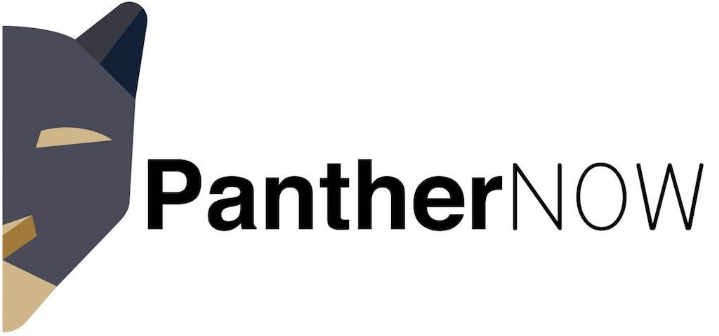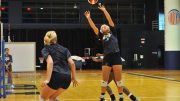Gabriella Pinos/Staff Writer
When you glance at your bracelet or a painting in a museum, it’s easy to assume that little to no math was used in their creation. But according to Mario Eraso, engineering and artistry go together more often than we think.
“When I see artists that are creating jewels, or jewel-making, that process is engineering at a miniature scale,” said Eraso. “If you think about the artist and the scientist, what they have in common is that they observe with close attention and detail.”
Eraso, the STEM coordinator in the School of Computing and Information Sciences, displayed his knowledge in STEM education during “Mixtape Mondays,” an event hosted by Frost Art Museum where FIU faculty share their research interests.
Eraso’s discussion focused around his involvement in outreach activities for elementary and secondary schools, where he, along with help from The Algebra Project, a math literacy effort, conducts interventions for students to strengthen their mathematical skills.
“[The Algebra Project’s] idea is to prepare people to pass all the hoops in math that prevent them from studying the career that they want,” said Eraso. “The hoops are end-of-course exams, state exams, the SAT or placement exams once you’re at a university.”
The intervention program includes activities involving spatial visualization, the ability to mentally manipulate two- and three-dimensional objects. Eraso believes that spatial development is a trait that lies within us all; however, we rarely use it due to a lack of exposure.
“There is this interaction that is naturally there and it manifests itself in nature. You can see it in plants whose leaves have a very geometric pattern, and we assimilate it very easily because it is so mathematical,” said Eraso.
Exposing students to spatial development as early as possible, according to him, is important to their future, especially in college.
“Having that ability decreases the number of students who drop out of engineering and increases retention rates,” said Eraso.
Some of the activities Eraso’s students participate in include replicating the sculpture park and buildings from the Modesto A. Maidique Campus in the video game Minecraft. The replica is then translated to the Integrated Computer Augmented Virtual Environment, or ICAVE, at MMC.
“When you walk into that ICAVE, there’s five screens positioned in a kind of pentagonal arrangement,” said Eraso. “If you wear a headset, once the translation is done from Minecraft to ICAVE technology, the person can experience that world.”
Other activities, such as building IKEA furniture using visual manuals, help kids strengthen their spatial development, according to Eraso. He also believes that coding and virtual reality skills are connectors of different disciplines, which he illustrated through the 3-D paintings on display throughout the discussion.
“The computer [serves] as a window for the student’s mind. It’s something that I see here at the museum with the selected pieces of work,” said Eraso.
The spatial visualization training he implements in elementary and secondary education, which he nicknames “Computer Science 0,” is also available to engineering students at FIU. Currently, students can enroll in COP1000, or Intro to Programming, for a similar experience, according to Eraso.
The application of spatial visualization in the classroom has also been at the center of the College of Engineering and Computing’s new department.
Formed earlier this year, the School of Universal Computing, Construction and Engineering Education, or SUCCEED, provides engineering students the opportunity to enroll in CS0-style classes and activities. SUCCEED also keeps the engineering students who do not meet the proper math prerequisites, or are considered not Calculus I ready, within the major. Even if they don’t understand every concept by the time they graduate, they can still earn a degree as engineering generalists.
“They can be hired in companies to assist engineers,” said Eraso. “Right now, they are not being discarded.”
With the need for engineering students with sharp mathematical skills in and out of college, Eraso’s interventions and CS0 program brings spatial visualization to the forefront of the math class. Not only will the program help high school students better understand their geometry class, but according to Eraso, it’s a skill that can be applied across all disciplines.
“I think that [spatial visualization] will help if the students actually get in there and do something,” said Eraso. “They are amazing.”
Photo courtesy of Gabriella Pinos






Be the first to comment on "FIU-SCIS STEM Coordinator discusses math outreach program at elementary and secondary school"